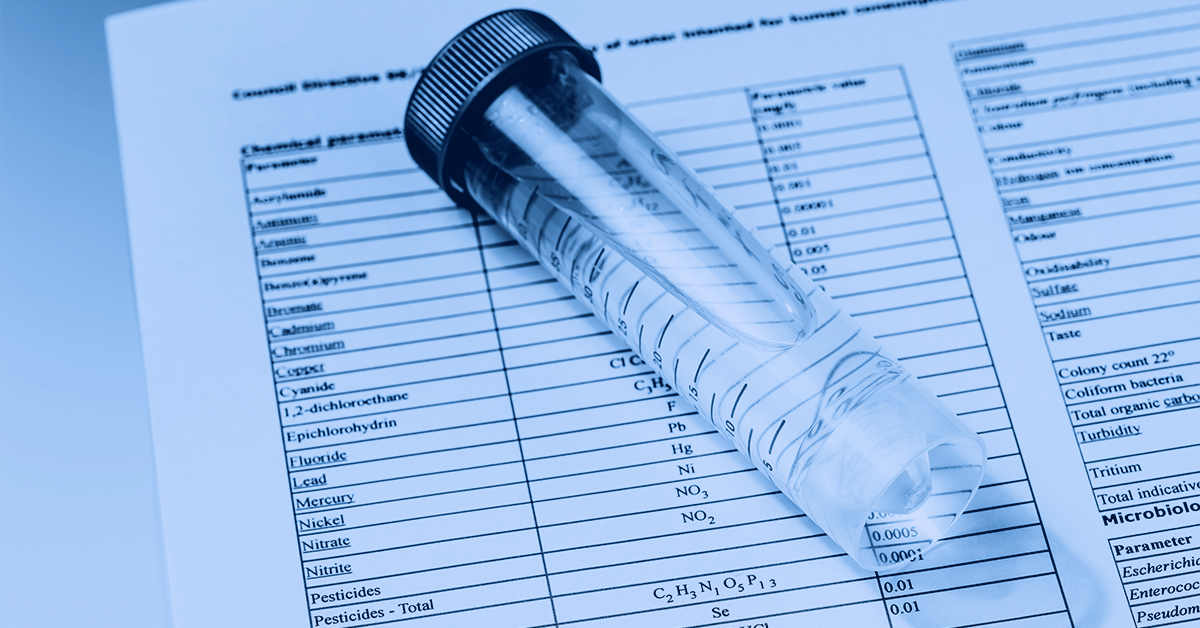Who is Responsible for Monitoring Drinking Water Quality?
For public water supplies, many organizations work together. In the case of private wells, monitoring drinking water quality falls on individual homeowners.

With water issues making headlines across the country, it's important to consider who is responsible for monitoring drinking water quality.
Turns out, no single group holds this responsibility. For public water supplies, many different organizations work together. And in the case of private wells, monitoring often falls on individual homeowners.
Let's learn more.
Why should we monitor water quality?
Monitoring the quality of drinking water is necessary for our health and safety. Despite having one of the safest water supplies in the world, drinking water in the United States may still contain many different contaminants.
The United States Environmental Protection Agency (EPA) sets standards for more than 90 contaminants in drinking water. Like lead, nitrates, bacteria and iron to name a few.
These 90 contaminants fall into one of two categories. A contaminant's category depends on the type of health effects it may cause.
Acute effects occur within hours or days of consumption. Microbes, such as bacteria and viruses, result in the greatest chance of experiencing these health effects.
Chronic effects occur after people consume a contaminant at levels over EPA's safety standards for many years. These contaminants include chemicals, radium and arsenic. And resulting health risks consist of cancer, liver issues, kidney problems or reproductive difficulties.
Water quality monitoring is therefore vital for alerting us to any current or emerging problems.
Municipal Water Quality Monitoring
For municipal water supplies throughout the country, the EPA determines our standards. Its rules include contaminant limits, water-testing schedules and methods that water systems must follow.
In short, the EPA ensures that public water supplies within the United States are safe.
However, the Safe Drinking Water Act (SDWA) gives power to the individual states. Passed by Congress in 1974, the law allows states to set and enforce their own drinking water standards as long as they meet the federal EPA limits.
Local water suppliers conduct compliance testing for the SDWA once a year. Every community water supplier is then required to provide an annual report to its customers.
Private Well Owner Monitoring
According to the CDC, over 15 million U.S. households rely on private, household wells for drinking water. But unlike public water supplies, the Safe Drinking Water Act does not regulate these wells.
Because of this, owners are not required, except in some jurisdictions, to test their water. However, this does not mean that private groundwater wells should go unchecked.
At a minimum, your private well water should be tested annually. Both at the tap and source.
And if you have a shallow well, it will require more frequent testing. Because they are more susceptible to contamination.
But owning a private well does not mean that you are on your own. Your local health department can help in selecting the right tests for assessing your drinking water quality.
Taking Monitoring Into Your Own Hands
Regardless of your water source, it's possible to be informed about your water quality at anytime. Your local Culligan water expert is equipped to collect a water sample and send it to our EPA certified lab for analysis.
If we find any contaminants in your water, our in-home reverse osmosis systems can reduce these by more than 95 percent.
